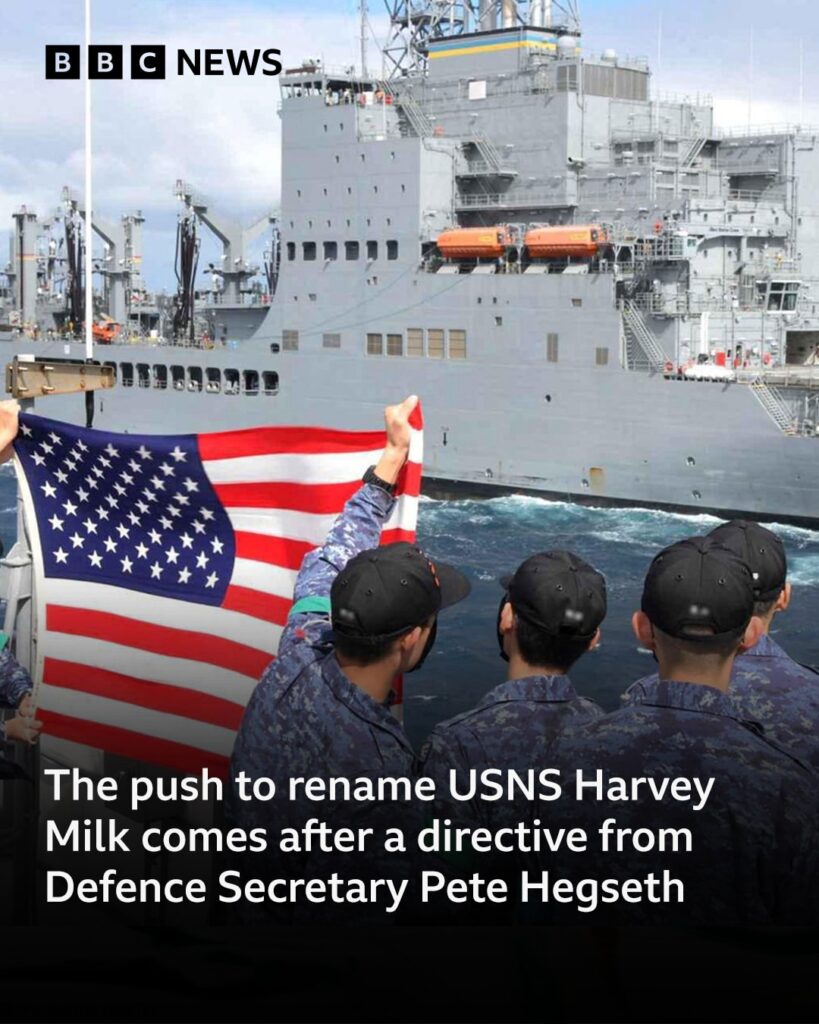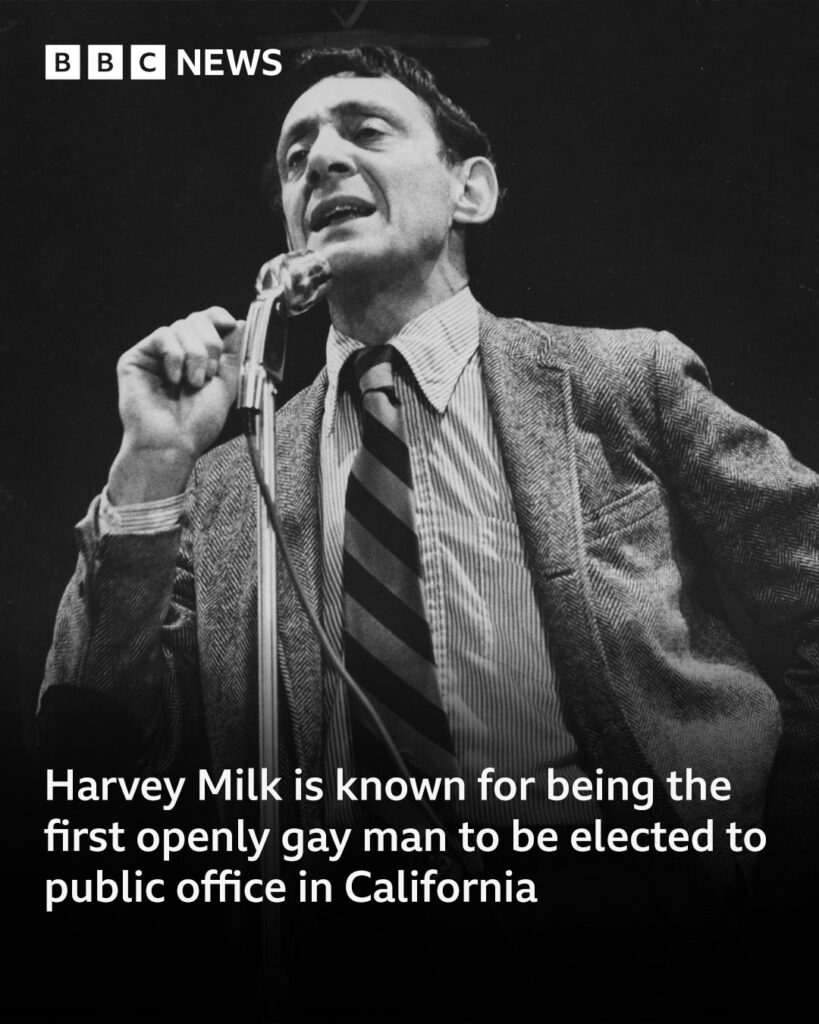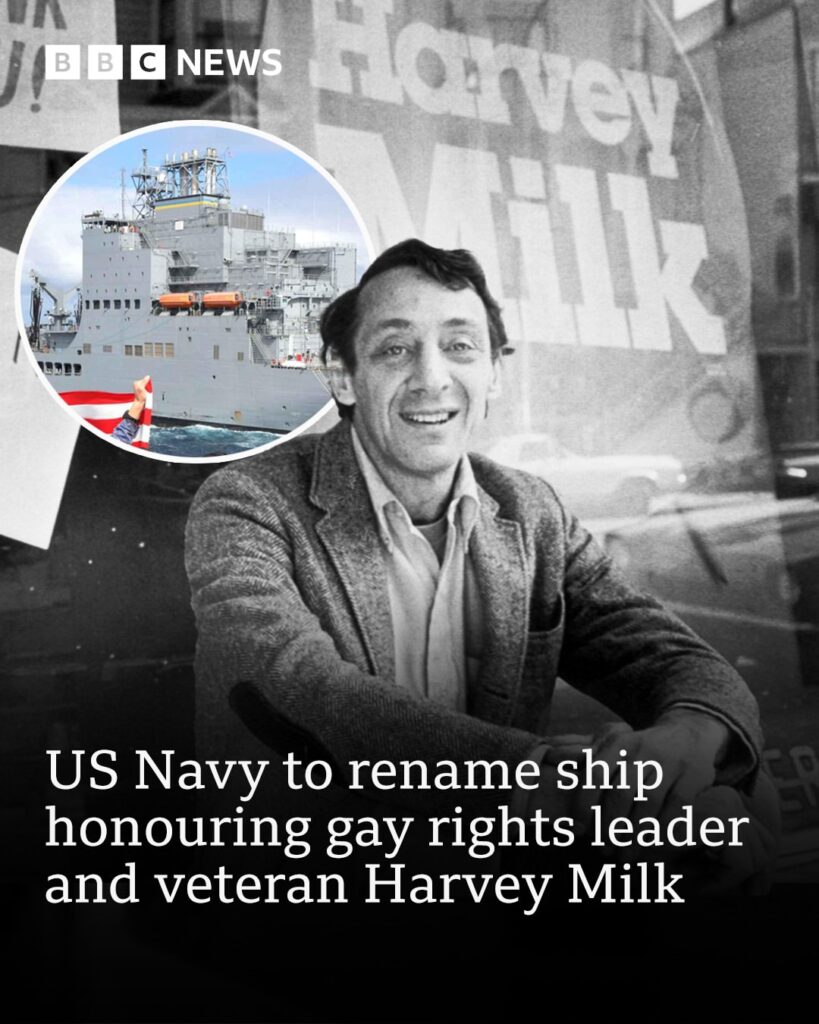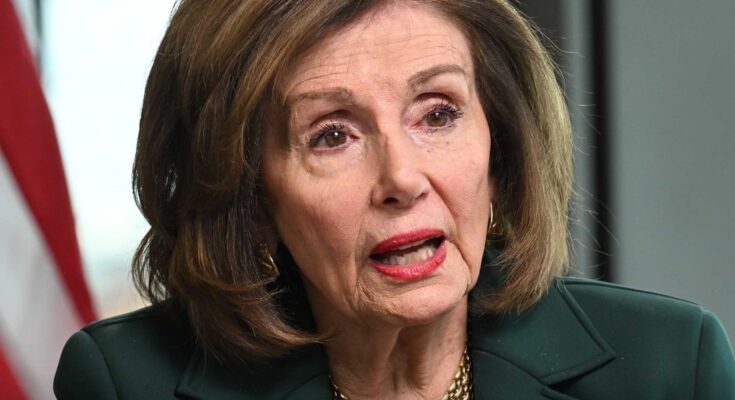
In a move stirring significant controversy and drawing attention nationwide, the United States Navy has announced plans to remove the name of Harvey Milk — a pioneering gay rights leader and Navy veteran — from one of its ships. This decision has sparked heated debate about military tradition, civil rights history, and the ongoing struggle for LGBTQ+ recognition and respect within the armed forces.
Who Was Harvey Milk?
Harvey Milk was a groundbreaking figure in the fight for LGBTQ+ rights in America. Born in 1930, Milk served honorably in the US Navy during the Korean War before emerging as one of the first openly gay elected officials in the United States. As a San Francisco city supervisor in the 1970s, he championed equality and civil rights at a time when being openly gay could mean facing discrimination, harassment, or worse.
Milk’s leadership and courage inspired many, making him a symbol of hope and progress for LGBTQ+ individuals everywhere. His legacy is remembered not just for his political achievements but also for his message of inclusion and the fight against prejudice. Tragically, Milk was assassinated in 1978, but his influence endures through countless LGBTQ+ advocacy movements and commemorations.
The Navy’s Original Naming Decision

In recent years, the Navy named a ship in Harvey Milk’s honor, marking a historic acknowledgment of his service and the importance of diversity within the military. This ship represented more than just a vessel; it was a floating tribute to progress, inclusivity, and the recognition of LGBTQ+ contributions to the country’s defense.
Naming a military asset after a figure like Milk was seen by many as a bold statement — an effort to reconcile past discrimination against LGBTQ+ service members and to promote a more inclusive future. It acknowledged the Navy’s evolving values and the importance of honoring individuals who fought not only on battlefields but also for civil rights.
The Decision to Remove Milk’s Name
The recent announcement to strip the ship of Harvey Milk’s name has shocked advocates, veterans, and civil rights groups alike. Official statements cite procedural reasons and efforts to align with traditional naming conventions. However, critics argue that this move undermines decades of progress and sends a regressive message about LGBTQ+ acceptance within the military.
Many see the removal as more than just a bureaucratic change; it feels like an erasure of LGBTQ+ history and a dismissal of the sacrifices made by service members like Milk. This has led to a wave of protests and calls for transparency and accountability in the Navy’s decision-making process.
Reactions From the Community

The LGBTQ+ community and allies have expressed deep disappointment and frustration over the Navy’s decision. Social media platforms have been flooded with messages of support for Harvey Milk’s legacy and criticism of the removal plan. Activists emphasize that Milk’s name on a Navy ship was a powerful symbol of inclusion and hope for LGBTQ+ service members currently serving.
Veterans’ organizations, especially those representing LGBTQ+ military personnel, have voiced concern that this action could discourage open service and harm morale. They argue that honoring diverse heroes is crucial in fostering unity and respect within the armed forces.
On the other hand, some traditionalists within military circles have welcomed the decision, advocating for a return to more conventional naming practices. This divide reflects broader societal tensions over how history is remembered and who is celebrated in public spaces.
The Broader Context: LGBTQ+ Rights in the Military

The controversy surrounding Harvey Milk’s name removal occurs against a backdrop of ongoing debates about LGBTQ+ rights in the military. Over the past few decades, the US military has taken significant steps toward inclusion — from repealing the “Don’t Ask, Don’t Tell” policy to allowing transgender individuals to serve openly.
Yet challenges remain, with policy shifts sometimes reversing progress and creating uncertainty for service members. The symbolic nature of naming a ship after Milk was more than ceremonial; it was a tangible recognition of these struggles and triumphs.
Removing Milk’s name risks undermining this progress and sending mixed signals about the military’s commitment to diversity and equality.
What’s Next?

As the Navy prepares to rename the ship, activists and supporters of Harvey Milk’s legacy are mobilizing. Legal challenges and public campaigns are underway to reverse the decision or at least bring greater public scrutiny to the process.
Some propose that instead of removing Milk’s name, the Navy should expand efforts to celebrate LGBTQ+ contributions through educational programs, memorials, and inclusive policies.
This controversy is prompting broader conversations about how military institutions honor history and diversity and how they can better reflect the values of all Americans who serve.
Conclusion
The planned removal of Harvey Milk’s name from a US Navy ship is a deeply contentious issue that touches on civil rights, military tradition, and the evolving recognition of LGBTQ+ service members. Milk’s legacy as a gay rights leader and Navy veteran remains a powerful symbol of courage and inclusion.
As the debate continues, it challenges the Navy and the nation to consider how best to honor those who have paved the way for equality, both on and off the battlefield. The outcome of this controversy will have lasting implications for how history is remembered and how inclusive the future of the armed forces can be.



